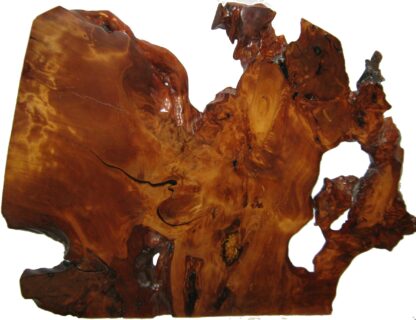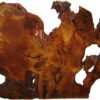Description
The oldest workable wood of the world :
Ancient Kauri (Agathis Australis)
Exotic wood over 50 000 years old now available
The prehistoric Ancient Kauri forests that grew 50 000 years ago are preserved under the surface of the North Island of New Zealand. Every tree grew for at least 1 200 years and were preserved underground. These awesome Ancient Kauri trees, command a presence that is almost spiritual. Those remaining today average smaller than the ancients, with a trunk up to 10ft in diameter, being free of branches up to 60ft above ground. Of the estimated 3 000 000 acres in the Ancient Kauri forests, only 350 acres of living Ancient Kauri trees remain.
Every board is certified and
guaranteed and each piece comes
with Certificate of Authenticity.
Available online soon!


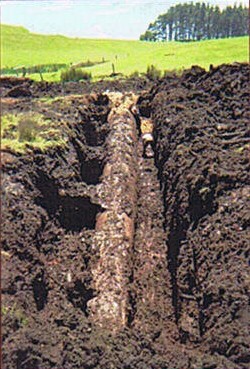

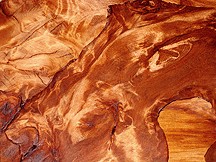

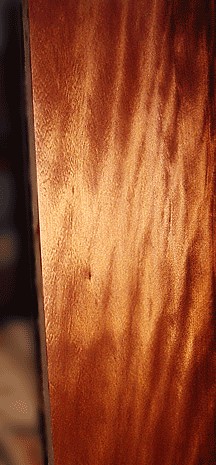

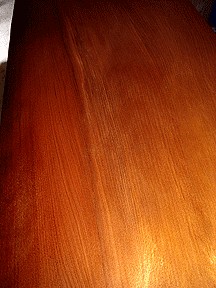
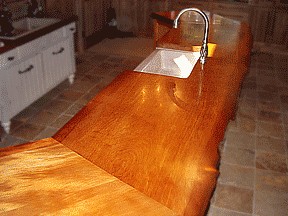
How old is the Ancient Kauri?
Radio carbon dating places the age of the Ancient Kauri trees that are being excavated from the northland of New Zealand at 50 000 years old. This is the maximum limit of radio carbon dating, it is probable that this wood is even older.
Scientists are also studying the growth rings of Ancient Kauri to piece together a look at the environment of our planet before the arrival of modern man.
For the Botanist and Arborist
The scientific name for Ancient Kauri is Agathis Australis.
The species is endemic to New Zealand and belong to the Araucariaceae plant family.
These plants are conifers; they produce cones instead of flowers for reproduction.
Ecologically Friendly
Excavated land is returned to natural state and no living trees are harvested. One notable difference: when finishing Ancient Kauri, special rewards await the woodworker who sands Ancient Kauri to 600 grit and higher. The wood grains and textures seem to come alive when polished to these levels.
What is special about Ancient Kauri?
Buried under a peat swamp by an unexplained act of nature at the end of the last Ice Age, the trees have survived the centuries in an underground resting place, sealed in a chemically balanced environment that has preserved the timber in perfect condition. The trees grew for nearly 2 000 years before they were buried. Some have a girth of around 40 feet, and a total height of nearly 200 feet. They are among the largest trees in the world.
How is Ancient Kauri harvested?
The logs are below the surface of what are usually farm fields and ranch lands. When a site is identified, permission is secured and expert operators of heavy equipment carefully expose and lift the logs out of the prehistoric bogs. They are immense and raising the logs to the surface is just part of the job: moving them to a location to begin the milling process, and the milling itself, has necessitated some innovative equipment designs and plain old lumberman’s ingenuity; working in wet conditions each log. Extraction of the logs is time consuming, expensive and technically difficult requiring skilled operators of heavy machinery.
Stunning colors and finishes
Rich gold and cognac colors, exciting and distinctive grains. Highly polished finish is rich and luminous, deep opalescent finish that shimmers and shifts, glistens as if lit from within.
Available Kiln Dried or Air Dried:
A huge selection of 1″ boards, 12″ wide, random lengths up to 11 feet, 2″ boards to 11 ft. long 3″ thick slabs and timbers. Natural edged timbers and boards. Large and small turning blocks. Bookmatched pieces available in many sizes: Veneers and plywood, flooring and millwork, 2″ and 3″ thick “stump slabs“, high activity in the grain similar to burl.
Does Ancient Kauri still grow?
The Ancient Kauri trees still grow in New Zealand and other locations around the Pacific Rim, including Australia, the Fijian Islands, Malaysia, the Philippines, Indonesia and New Caledonia. The early settlers of New Zealand harvested incredible amounts of Kauri around the turn of the last century, using it first for ship building and then for everything from houses and bridges to furniture and household items. Law now protects the Ancient Kauri trees that grow in New Zealand and there are reserves in various areas of the North Island. Ancient Kauri trees, however, are not found any other place else on earth.
Ancient Kauri is the most famous of New Zealand native trees and one of the largest trees found anywhere in the world. This magnificent tree native only to New Zealand, once covered much of the area of North Auckland and the Coromandel Peninsula.
The largest Ancient Kauri on record, known as the “Father of the Forests”, grew at Mill Creek, Mercury Bay. It’s height was 72ft to the first branch, with a girth of 77ft. Tane Mahuta, the famous tree in Waipoua Forest, Northland, is 167ft high, with a girth of 55ft, and has been calculated to be over 2 100 years old. While it is similar in density to cherry, with textures similar to basswood, it feels like no other wood. Most woodworkers have been compelled to slow down from their usual methods and use an approach that is more attentive to the wood and techniques.
Is this wood petrified?
No. It can be worked with normal woodworking tools, in the same ways you are used to working with other species. Some other ages: 16 000 years ago the depressions that will become the Great Lakes were fully formed, and the region became ice-free approximately 5 000 years ago, at the end of the last ice age.
The oldest Homo Sapiens were on earth around 40 000 years ago. Wooly Mammoths and Saber Tooth Tigers became extinct about 10 000 years ago.
The La Brea Tar Pits in California were actively gaining specimens 10 000 to 10 000 years ago.
THE ANCIENT KAURI STORY must be carefully brought to the surface. Once removed from the ground the log is assessed, then milled to yield the best grain and timber qualities. After the log has been removed, the area is then restored to its original contours with no environmental consequences.
Despite its long burial, with careful selection, cutting and drying, the wood maintains its beautiful qualities and finishes to a rich cognac shade. When polished the wood is a deep color with hues, textures and sheen’s that constantly change under differing shades of light. It literally glistens as if lit from beneath the surface. Many pieces have a beautiful Whitebait* grain activity that will be very iridescent when sanded to a very fine grit and a clear finish.
This historic, highly prized and respected native tree that is so much a part of New Zealand’s history, can be seen and appreciated by visitors. Native Reserves give the opportunity to take in their beauty and Museums provide well-documented history. Today the logging of living Ancient Kauri trees is strictly controlled and the few trees that are milled today are done only on a sustainable yield basis. Export of this timber is restricted and can only be exported as finished goods.
In addition to the timber, Kauri Gum was greatly prized as an ingredient for the manufacture of high quality paints and varnishes. Exquisite specimens of Kauri Gum have been carved and polished. The combination of wood and gum crafted and polished looks magnificent.
Serious Wood for Serious Projects
Extensive scientific Radio Carbon Dating tests have done on samples of Ancient Kauri by independent organizations that include:
-
The University of New Zealand in Waikato.
-
The University of Sydney in Australia.
-
The New Zealand Institute of Nuclear Science.
-
Beta Analytic Inc. of Miami, Florida, the United States leading laboratory for radio carbon dating analyses.


